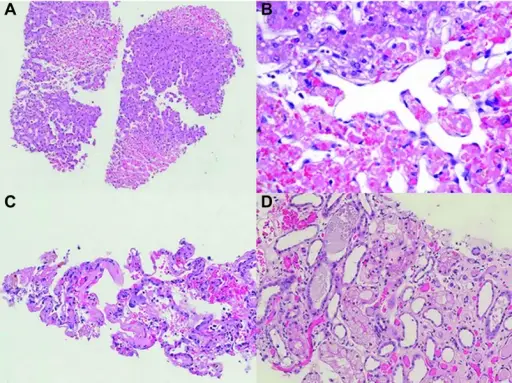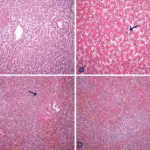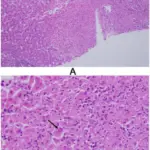Centrilobular necrosis of the liver is the necrosis of the centrilobular tissue of the hepatic lobule.
What is the Pathology of Centrilobular Necrosis of the Liver?
The pathology of centrilobular necrosis of the liver is:
-Etiology: The cause of centrilobular necrosis of the liver is hepatotoxins
-Genes involved: None.
-Pathogenesis: The sequence of events that lead to centrilobular necrosis of the liver includes ischemia, drugs, venous outflow impairment, preservation/reperfusion injury, and alcoholic hepatitis.
-Histology: The histology associated with centrilobular necrosis of the liver shows ischemic necrosis characterized by coagulative hepatocyte necrosis, pyknotic or karyorrhectic nuclei, sharply demarcated with apoptotic bodies at the interface of healthy and necrotic hepatocytes; sinusoidal dilation and congestion can be prominent if a component of right-sided heart failure is present.
How does Centrilobular Necrosis of the Liver Present?
Patients with centrilobular necrosis of the liver typically affect males present at the age range of 20-45 years. The symptoms, features, and clinical findings associated with centrilobular necrosis of the liver include abrupt onset of nausea, weakness, fatigue, abdominal pain, and vomiting.
How is Centrilobular Necrosis of the Liver Diagnosed?
Centrilobular necrosis of the liver is diagnosed using LFT, ALT levels, CT scan, and MRI.
How is Centrilobular Necrosis of the Liver Treated?
Centrilobular necrosis of the liver is treated with surgical resection.
What is the Prognosis of Centrilobular Necrosis of the Liver?
The prognosis of centrilobular necrosis of the liver is poor with an increased mortality rate.



